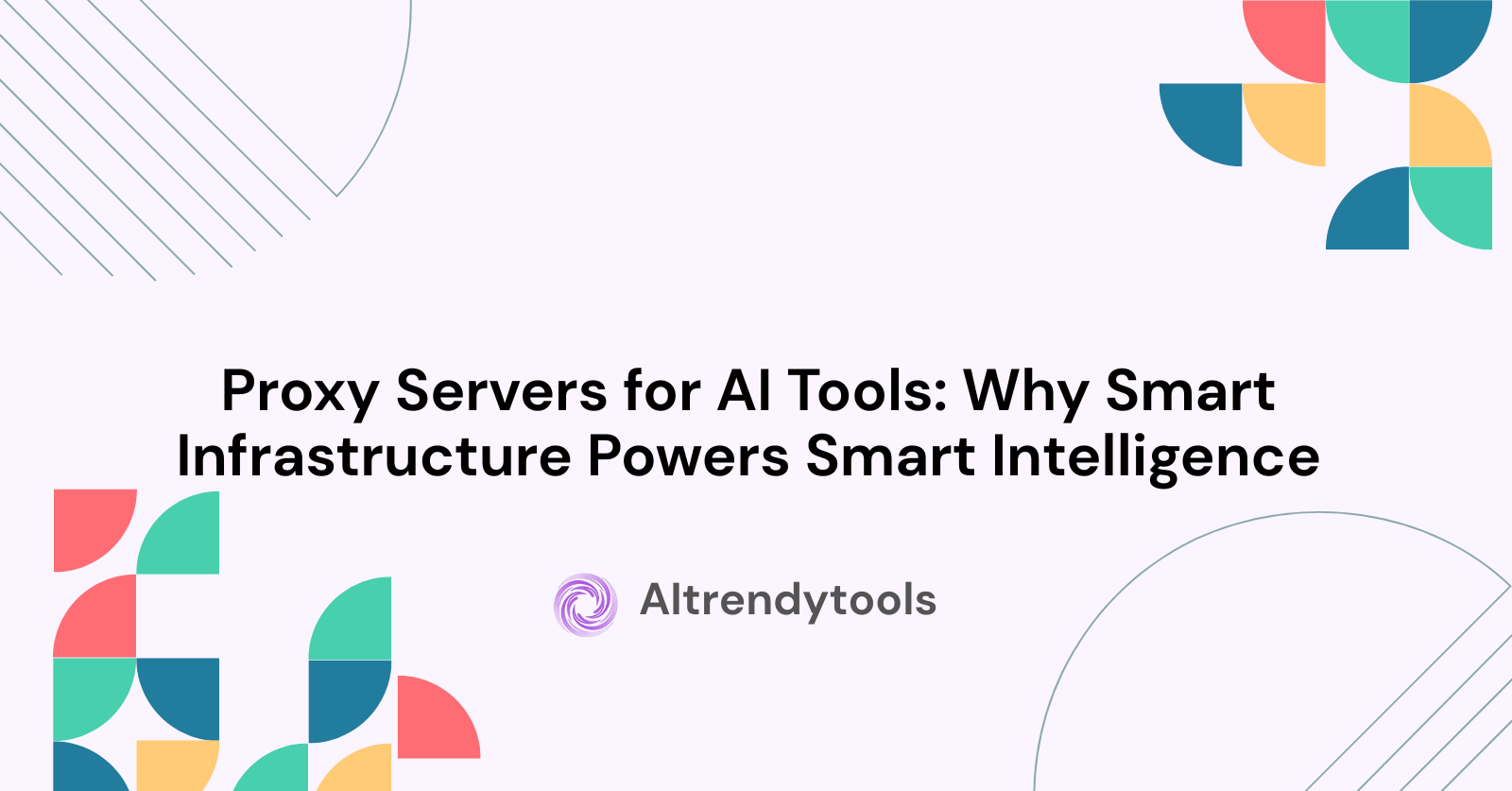🔥 AITrendytools: The Fastest-Growing AI Platform |
Write for usProxy Servers for AI Tools: Why Smart Infrastructure Powers Smart Intelligence
Discover how proxy servers power AI tools by enabling fast, anonymous, and geo-diverse data access essential for training, automation, and scalability.
May 5, 2025
Artificial Intelligence isn’t just the buzzword of the decade – it’s a fundamental shift in how we build, optimize, and innovate. From content generation and machine learning models to image processing and language automation, AI tools are transforming industries. But here’s the thing no one really talks about: these tools are incredibly resource-hungry when it comes to data access, and they don’t thrive in isolation. They need reliable, fast, and anonymous access to a vast array of data points. That’s where proxy servers quietly step in as unsung heroes behind the scenes.
Imagine trying to teach a child how to speak, but only allowing them to hear one voice, from one room, in one language. Not very effective, right? AI tools need diversity in data – and the infrastructure to access it safely and efficiently. Proxy servers help them do exactly that.
Why AI tools depend on proxies more than you think
Let’s be real: AI tools don’t just crunch data – they breathe it. They scan the internet, crawl pages, analyze content, and parse results in real time. When you run an AI-powered bot, web scraper, or model training platform, it doesn’t access data like a regular user. It needs to operate across multiple regions, avoid getting blocked or rate-limited, and perform requests at scale.
Proxy servers offer a bridge between the AI application and the web, masking the identity of the requester, distributing traffic, and unlocking geo-specific results. Whether you're running sentiment analysis in Spain, price tracking in Canada, or visual search training in Japan, a smart proxy network gives your AI tool a multilingual, borderless edge.
Types of proxies best suited for AI infrastructure
There’s no such thing as a “one-size-fits-all” solution in tech – and proxies are no exception. Choosing the right type depends on the AI task at hand. Here’s a simple breakdown:
Proxy Type Use Case for AI Tools
Residential Proxies: Ideal for scraping real-user data and geo-based insights
Datacenter Proxies: High-speed requests for model training and bulk operations
Mobile Proxies: Best for app-testing, mobile dataset collection
Rotating Proxies: Effective for continuous requests with low block risk
SOCKS5 Proxies: Versatile option for heavy data transfer and AI crawling
For most machine-learning workflows, datacenter proxies are the top pick due to their performance and scalability. But if accuracy across different regions is vital, residential proxies offer a more human-like browsing footprint.
Benefits of using proxy servers in AI data collection and training
Training an AI model is like feeding a growing brain – it needs a diverse, accurate, and uninterrupted diet of information. Proxies make this possible by allowing tools to:
- Access geo-targeted content to localize datasets
- Perform high-frequency data collection without being flagged
- Balance traffic load for performance optimization
- Simulate real-world scenarios from different devices and locations
- Maintain anonymity during research and model deployment
The biggest edge? Automation. When proxies rotate IPs or funnel data through multiple channels, they allow AI systems to scale up operations in the background, free from the bottlenecks of manual interaction or IP bans.
What to look for in a proxy provider for AI applications
You don’t just need proxies. You need fast, secure, and scalable ones tailored to tech-heavy tasks. When picking a provider, consider these must-have features:
- Speed and bandwidth – AI applications depend on quick, uninterrupted data flow.
- Global coverage – More countries mean more data diversity.
- High uptime – Even a few minutes of downtime can mess up training cycles.
- Rotation capabilities – Essential for automation at scale.
- Easy API integration – You want setup to be seamless, not a coding nightmare.
That’s why top developers and data scientists often lean toward trusted platforms like Proxys. With a robust infrastructure and AI-friendly features, it provides a dependable backbone for modern, data-driven environments.
The future of AI and proxies: a partnership that will only grow
As AI evolves, so do its data needs. Models are getting larger, faster, and more complex. Generative AI, real-time processing, and autonomous decision-making will demand even more flexible access to external information. Proxies are becoming not just tools – but strategic partners in development cycles.
Think of proxies as the oxygen tank for a deep-sea diver. The diver (AI) can do incredible things underwater, but only if supported by a steady, reliable flow of air. Without a proxy network, AI tools are limited in scope, perspective, and reliability.
Conclusion
Proxy servers and AI tools form a critical tech symbiosis – one powers the insight, the other enables the access. Whether you're training a multilingual chatbot, crawling sites for predictive analysis, or benchmarking competitors across markets, a powerful proxy setup isn’t optional. It’s foundational.
Still wondering where to start? Let your AI tools breathe freely and globally – give them the infrastructure they deserve.
🚀 Submit Your Tool to Our Comprehensive AI Tools Directory
Get your AI tool featured on our complete directory at AITrendytools and reach thousands of potential users. Select the plan that best fits your needs.





Join 30,000+ Co-Founders
Related Blogs
Chaos GPT Exposed: 5 Shocking Goals That Alarm AI Experts
Discover what Chaos GPT is, how this autonomous AI agent aims to destroy humanity, and what it reveals about AI safety. Learn the truth behind the viral experiment.
Dext Review 2025: Guide to Automate Your Bookkeeping
Discover how Dext software transforms expense management with 99.9% accuracy. Complete guide to features, pricing, integrations & alternatives for 2025.
Texto Invisible: 10 Ways to Copy Hidden Text & Blank Space
Master texto invisible for WhatsApp, Instagram & gaming. Learn how to create hidden text, blank characters & empty spaces. Free generator + step by step guide
Submit Your Tool to Our Comprehensive AI Tools Directory
List your AI tool on AItrendytools and reach a growing audience of AI users and founders. Boost visibility and showcase your innovation in a curated directory of 30,000+ AI apps.





Join 30,000+ Co-Founders

